Easel
Minter for artists/original sellers
Project Type
In house Project at Pylons
My role
Lead product designer
Methods
Qualitative Research (articles/research paper reviews, target audience interviews, domain expert interview)
Information Architecture
User Journey Maps
Prototype
Prototype Testings
Tools
Figma
Team
1 Head of product
1 Lead product designer
1 PM
1 QA
2 SDEs
Duration
13 months
In house Project at Pylons
My role
Lead product designer
Methods
Qualitative Research (articles/research paper reviews, target audience interviews, domain expert interview)
Information Architecture
User Journey Maps
Prototype
Prototype Testings
Tools
Figma
Team
1 Head of product
1 Lead product designer
1 PM
1 QA
2 SDEs
Duration
13 months
Easel is where creators make NFTs:
Its purpose is to act as a companion app to the wallet, filling in the gaps where the wallet falls short. Since wallets are primarily focused on financial and transactional functions, all aspects related to image editing, copyright and edition control, pricing, and other attribute details are handled within Easel. This ensures the wallet remains streamlined and doesn’t overwhelm users with excessive functionality.
- Upload art, add details, and list it for sale
- Everything updates instantly in the wallet app
Its purpose is to act as a companion app to the wallet, filling in the gaps where the wallet falls short. Since wallets are primarily focused on financial and transactional functions, all aspects related to image editing, copyright and edition control, pricing, and other attribute details are handled within Easel. This ensures the wallet remains streamlined and doesn’t overwhelm users with excessive functionality.
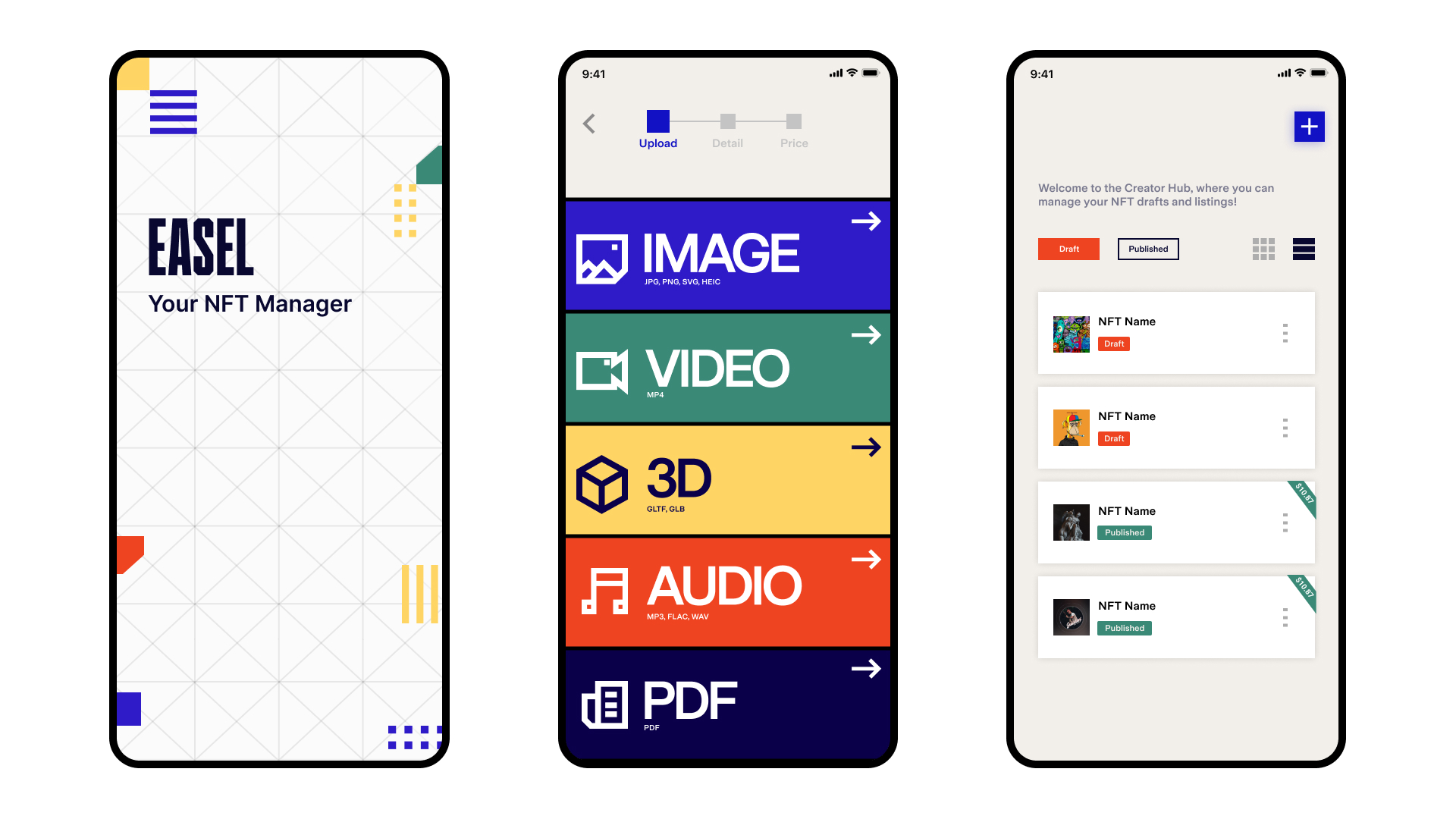
Understanding the Pain Points Before Designing
Before starting the design, the pain points of uploading digital properties like NFTs to the blockchain were already well-known:
Problem 1:🗣️🗣️ “All I wanted was to upload my art, but it felt like filing my taxes."
The main challenge is that uploading NFT artwork is a highly complex process. Once uploaded, any associated information becomes permanently unchangeable. To manage this:
- Media files are temporarily stored in IPFS.
- Attribute data stays in local device storage until the user hits "publish", at which point it's uploaded to the blockchain.
So, we needed to:
- Replace cryptic attributes with human-friendly language
- Provide explanations
Problem 2: 🗣️🗣️“Wait, you mean I can never change it once it’s uploaded?! What is this, a tattoo?!”
The irreversible nature of uploading must be made extremely clear to artists. If we don’t emphasize this, they may treat it like a casual post as they do on Instagram.
To raise awareness:
- We included a first-time user tutorial slide
- We added a notice pop-up before publishing
First time user tutorial slide
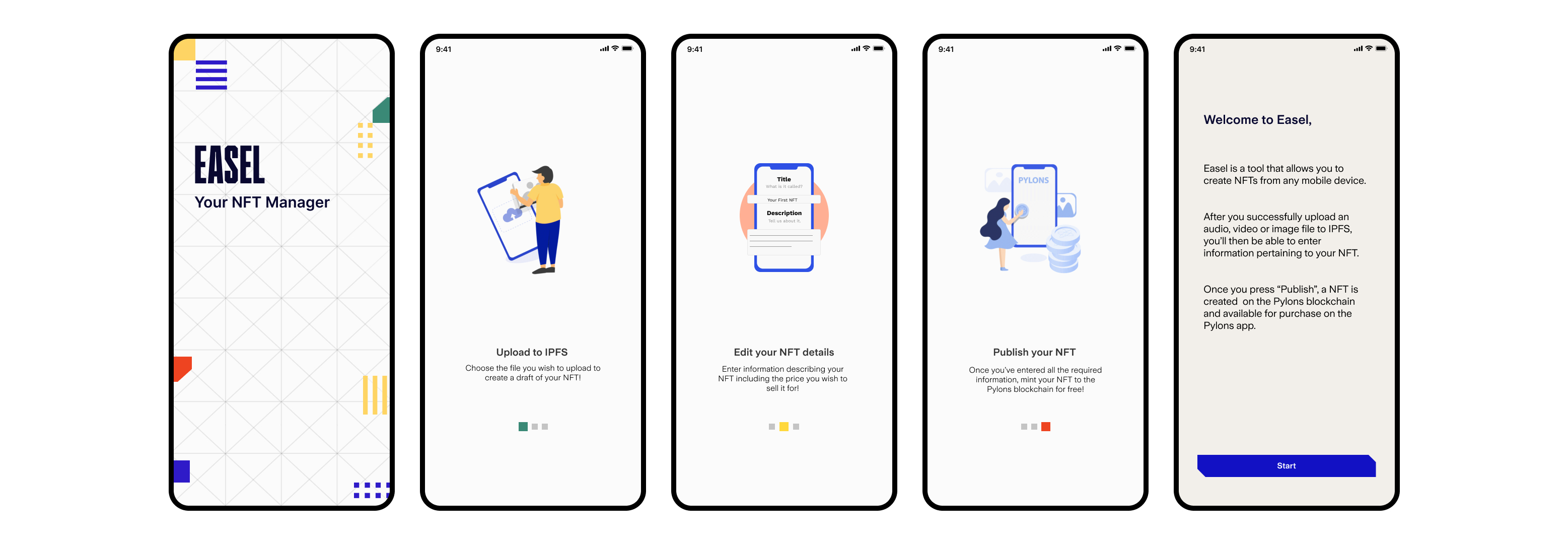
Branding & Visual Language to Reinforce Awareness
Our color scheme was also chosen with this user psychology in mind. Since publishing to the blockchain leaves a permanent record, we needed users to be alert every time they confirm an upload. That’s why red was chosen as the primary color—its alerting effect reinforces user awareness.
Through visual language, we’re constantly educating the user—Your NFT upload is irreversible, even historical.

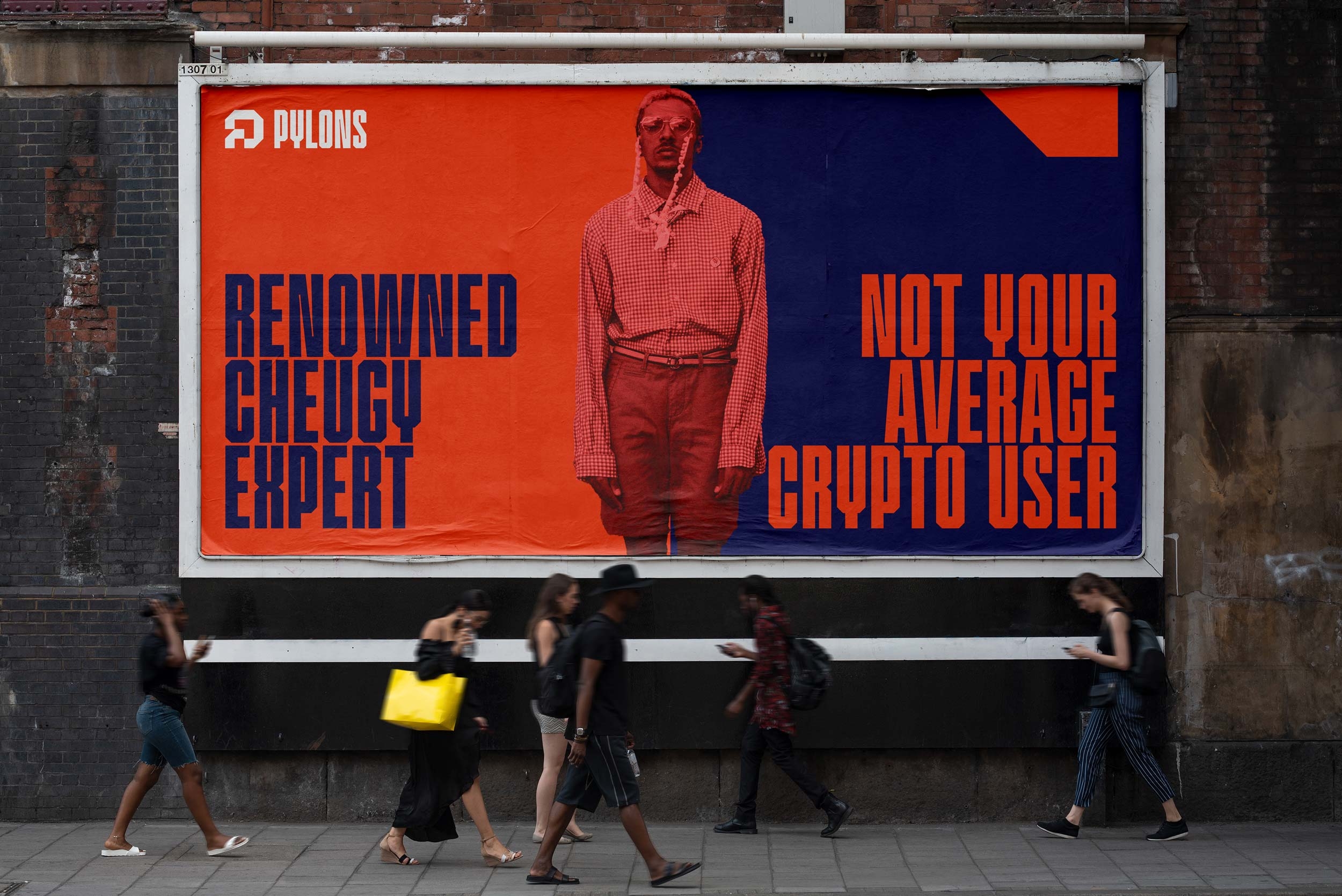


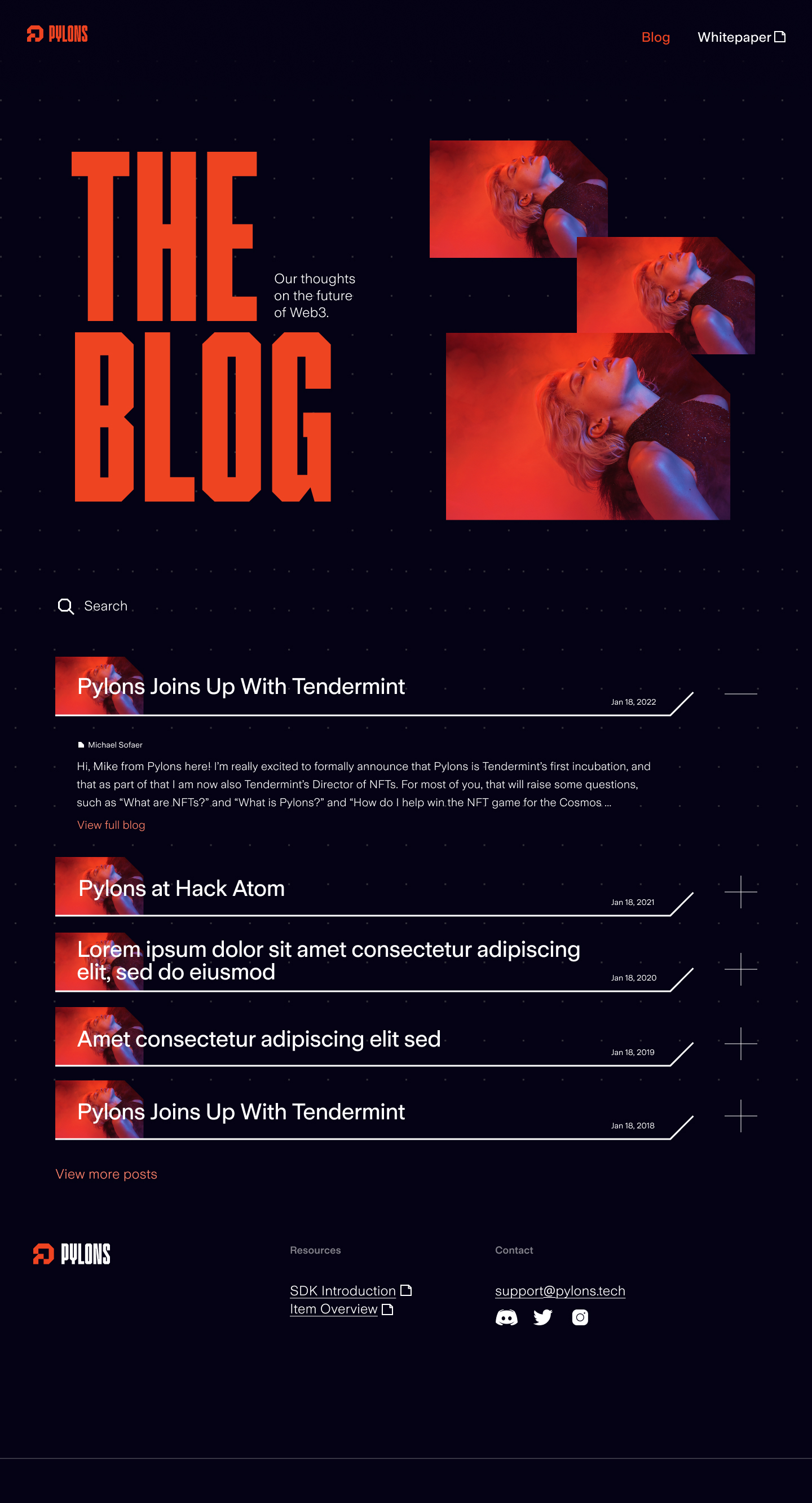
Launching: A Unique NFT Minter Experience
I started by mapping out the user journey:
![]()
I started by mapping out the user journey:

The first version of Easel broke down the minting flow into 3 steps:
Upload, Edit, and Publish.
To avoid cognitive overload, we used a stepper UI element to guide users through the process smoothly.
![]()
Upload, Edit, and Publish.
To avoid cognitive overload, we used a stepper UI element to guide users through the process smoothly.

They’re Leaving the Product!
As technical capabilities grew, the number of editable NFT details and attributes increased. The Edit screen got longer, eventually requiring at least two scrolls to reach the continue button.
Even in version 1.0, the continue button was below the fold:

More options = Longer decision-making time.
This led to:
- Very short durations on Upload and Publish steps
- Disproportionately long time-on-task in the Edit step
- High drop-off rates
Solution: Reducing Cognitive Load
To lighten the second step, I split Edit into two: Detail and Price.
To keep the number of steps still at three, I removed the Publish step, since it only involved tapping a publish button—functionally lightweight but taking up a whole step.
This was a waste of cognitive resources and diluted the flow.
Final Stepper:
Upload → Detail → Price
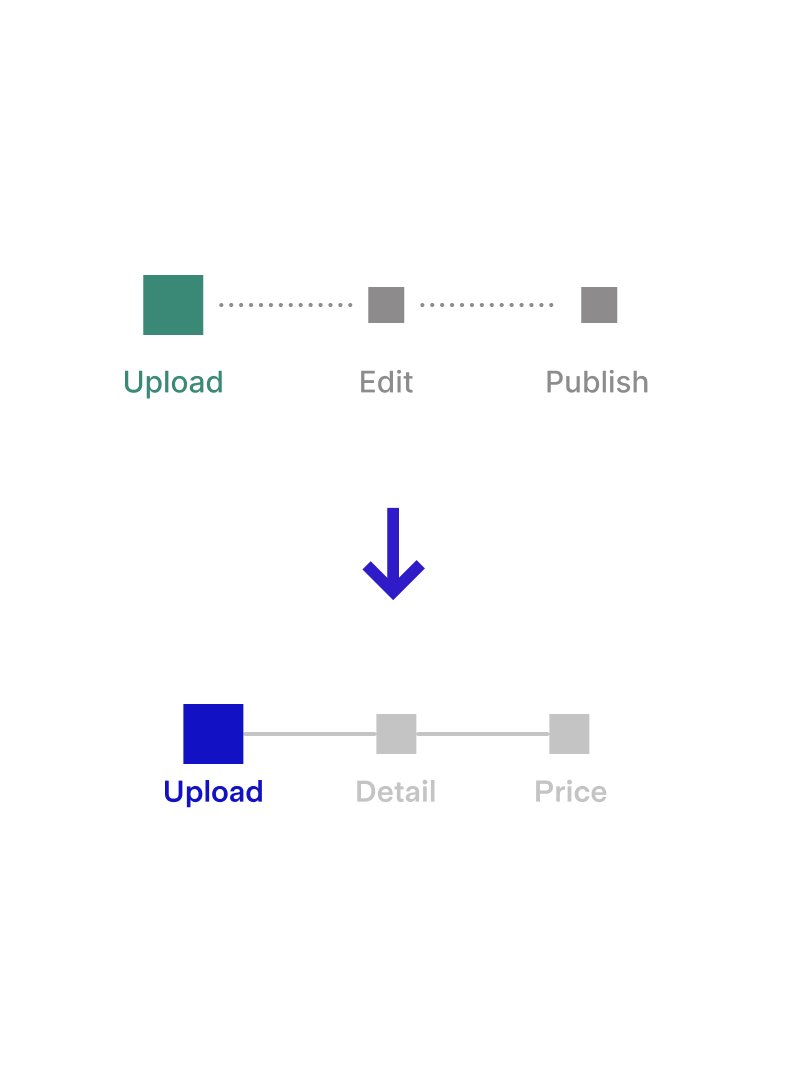
More Than an Upload Tool: A Creator Hub
After refining the core functionality, we introduced a Home Screen and initial dashboard — the Creator Hub.
Users can now:
- View all published and drafted digital assets
- Review listing history and details
Easel is now not just a minting tool, but a creator-centric hub that complements the wallet while supporting professional NFT creators at every step.
Deliverables
Creator hub screens

Audio upload screens

Detail and price screens

Success Metrics
To evaluate the success of Easel’s core NFT minting flow and ensure a smooth user journey, we’ve identified key success metrics focused on two stages: content creation and feature engagement. These metrics will help us track friction points, measure feature adoption, and optimize user completion rates:
Upload Success Rate – Percentage of users who successfully upload media files.
Mint Completion Rate – Percentage of users who complete the full minting flow.
Average Time to Mint – Time it takes from upload to final mint confirmation.
Drop-off Rate at Each Step – Percentage of users exiting at each stage of the funnel.
Error Rate During Minting – Frequency of technical issues encountered during minting.
Feature Engagement Rate – Percentage of users interacting with optional edit features (e.g., custom pricing).
Average Time on Edit Page – How long users spend on the edit step.
Form Abandonment Rate – Rate at which users leave the edit step without completing it.
Number of Edits per NFT – Average number of adjustments made before publishing.
